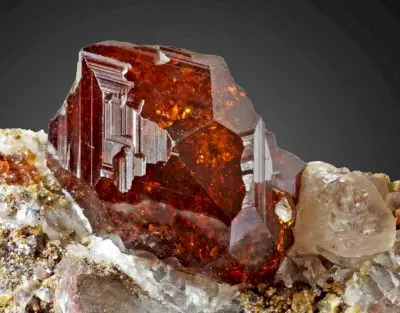In fact, differences in hardness and weight helped ancient gemstone carvers in Sri Lanka, South of Asia and Burma understand the difference between rubies and spinels before gemology was introduced to the world as a science

Both Spinel and Ruby can occur in shades of red, but there are subtle differences. Ruby tends to have a slightly deeper, intense red color with hints of blue, while spinel can exhibit a broader range of red hues, including orangey-red, purplish-red, or pinkish-red. Refractive index (RI) is a measure of how light bends when it enters a gemstone. Ruby typically has a higher RI than spinel. You can use a refractometer, a tool commonly found in gemological laboratories, to measure the RI and compare it to reference values. Ruby often exhibits a strong red fluorescence under ultraviolet (UV) light, while spinel generally displays little to no fluorescence. This property can be observed using a UV light source.
A gem dealer should possess knowledge about identifying and distinguishing spinel from ruby because these Gemstones have significant differences in value, rarity, and desirability. By accurately identifying and distinguishing spinel from ruby, a gem dealer can provide accurate information to potential buyers and ensure transparency in Gemstone transactions. This knowledge allows them to assess the quality, rarity, and value of each gemstone accurately, which is essential for pricing, marketing, and customer satisfaction.
Rubies and red spinels are commonly found in mines. Due to their great similarity, the two Minerals were not separated from each other until recent years, so most red pearls were considered rubies in ancient times. In 1783, a French mineralogist named Louis Rom de lisle introduced Pearl as a separate mineral from ruby. From a Chemical point of view, ruby is a combination of Aluminum oxide corundum (AL203) and magnesium aluminum oxide (MgAL204), while rubies are in a "hexagonal crystal" hexagonal crystal system. They form "Trigonal", forming spinel gemstones in the isometric crystal system, "Cubic cube" and "Octahedral".
The density and light emission index of rubies are slightly higher than those of rubies, but this difference is so significant that it distinguishes the two seemingly similar stones. In fact, differences in hardness and weight helped ancient gemstone carvers in Sri Lanka, South of Asia and Burma understand the difference between rubies and spinels before gemology was introduced to the world as a science. Ruby is one of the most highly valued gemstones, often commanding higher prices compared to spinel. The quality, size, and origin of a ruby can greatly influence its value. Spinel, while still a desirable gemstone, generally has a lower market value in comparison.
Ruby is considered one of the rarest gemstones, especially fine-quality rubies that exhibit intense red hues without any undesirable undertones. True rubies of exceptional quality are relatively scarce, which contributes to their high value. Spinel, while not as rare as ruby, can still be found in varying qualities and colors. The market demand for rubies is typically higher due to their historical significance, cultural associations, and the enduring popularity of red gemstones. Ruby is also one of the traditional birthstones for July. Spinel has gained recognition and appreciation in recent years but generally has a lower demand compared to ruby.
Both gemstones can contain inclusions, but the type and character of the inclusions may differ. Ruby commonly shows needle-like inclusions known as rutile silk, while spinel may have characteristic octahedral crystal inclusions or fine growth lines. Ruby is one of the hardest gemstones, ranking 9 on the Mohs scale. Spinel is also relatively hard, but it ranks slightly lower at 8. You can perform a hardness test using known materials of different hardness levels to compare scratch resistance.



